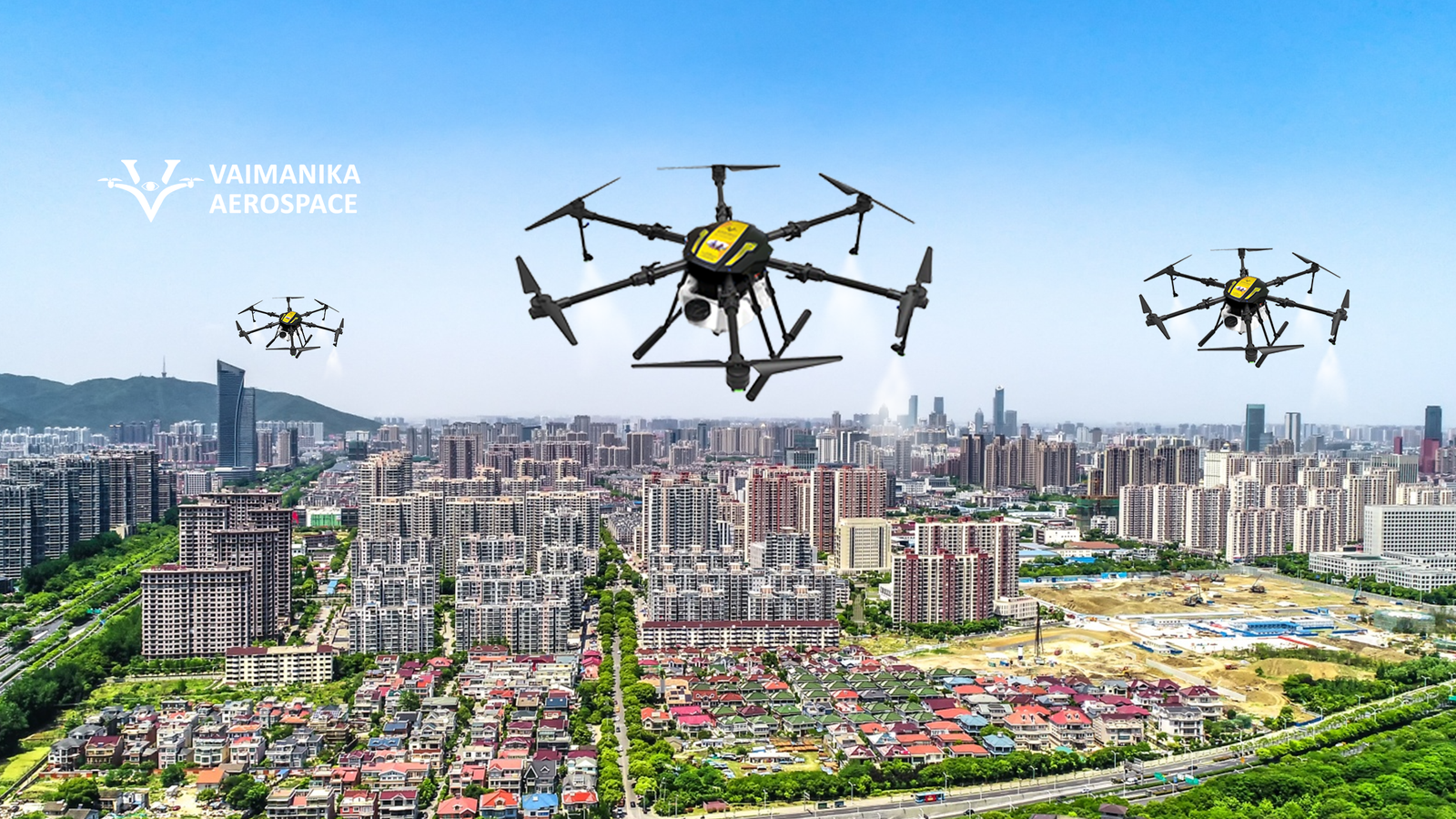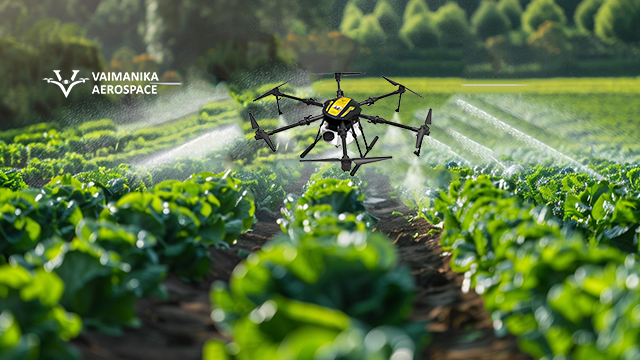India’s agriculture is poised for change, aided by technology such as Kisan Drones. With farming reliant on traditional labor, conventional machinery, and time-consuming techniques, the Kisan Drones—like models approved by the DGCA from Vaimanika —will change the landscape of precision, efficiency, and sustainability on farms in India. Here is how Kisan Drones outperforms traditional farming practices in drastic ways:
1. Cost Effective Use of Inputs
With traditional spraying and fertilizing, there is too often wasted application of inputs as they are too often either over-applied, or sprayed uniformly. Kisan drones apply chemicals and pesticides with precision when spraying, only applying what is needed to the necessary area. Farmers can reduce their input costs with uniform spray of fertilizer and pesticides by up to 30-40%.
2. Save Large Amounts of Time
Manual crop spraying is time consuming and can take hours, or even days on large fields. A single drone can spray a single field, and can generally spray at least 8 acres an hour, while spraying up to 25 acres a day. Farmers can save precious time during peak cropping seasons allowing them to make management decisions timely and effectively.
Watch how Kisan Drones rapidly cover vast fields compared to manual spraying in this demonstration video: https://youtu.be/pS5D02noBQE?si=wkm-AnYllhCG7dU7
3. Safety and Health
Farmers using conventional hand-held sprayers face direct hazards from chemicals, compromising their health. A Kisan Drone eliminates that risk, allowing farmers to conduct spraying operations at a distance, ensuring their well-being in the field with the lowest risk.
4. Increased Crop Yields
As Kisan Drones come equipped with GPS and advanced sensors to consistently survey the land and provide precise data regarding plant health and soil conditions, it delivers on the farmer’s desires of administering inputs that crops can use, where they need it, and when they need it. This quality of grounded and equitable coverage can lead to increased yields, decreased losses, and greater production quality.
5. Less Dependence on Labor
Labor shortages are a consistent issue for farmers. Labor challenges are seen with farm operations during peak growing seasons and periods when there are no laborers available to conduct harvesting for example. Drones require one pilot with very simple operational capabilities to conduct labor force intensive work and do it quicker, with much more efficiency, and with less dependence on labor. This control exposes farm level operations to less risk concerning a future labor shortage.
6. Data-Driven Decisions
Today’s Agriculture Drones allow real-time data collections concerning crops, soil moisture, pest outbreaks, and farmers can make timely, informed decisions regarding the irrigation frequency, fertilization measures, and pest control. These items are almost impossible, to accomplish conventionally without a drone.
7. Sustainable Practices
Drones are lightweight and battery operated, which reduces the carbon footprint when compared to traditional diesel-based equipment. In addition, their negligible field contact helps reduce soil degradation and compaction.
8. Accessibility for Small Farmers
Government subsidies and renting programs now enable small/marginal farmers to use drone technology, providing equitable access and inclusive growth.
Conclusion
Kisan Drones are changing the landscape of agriculture in India by making it smarter and future ready. They are offering considerable benefits over traditional ways: they save money and time, provide safety for farmers, increase yield and promote the way to sustainable agriculture. For farmers and entrepreneurs, it is no longer about ‘if’ they should switch their farming operation to Kisan Drones, but ‘when’.





